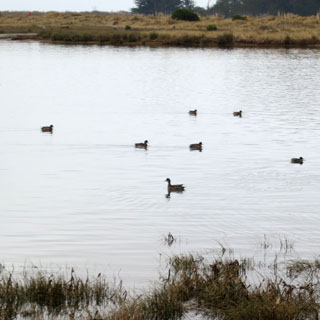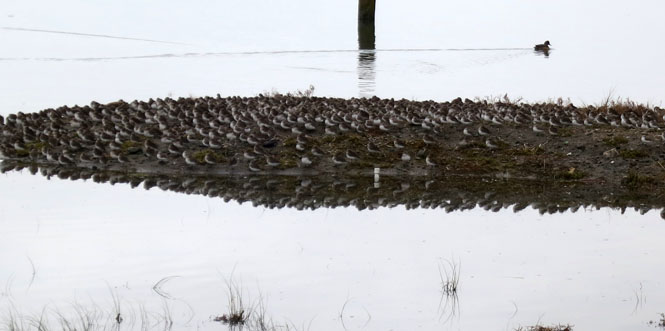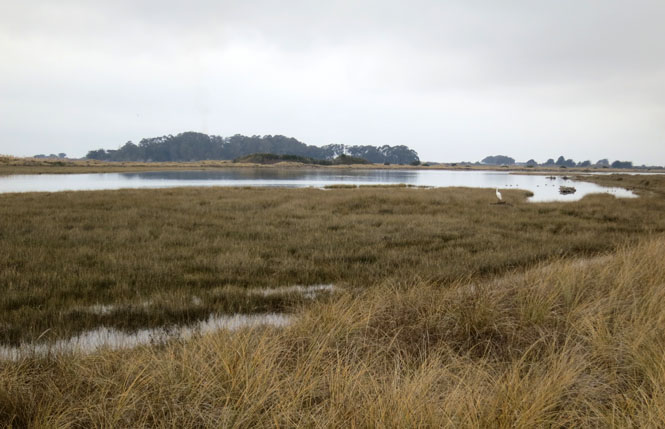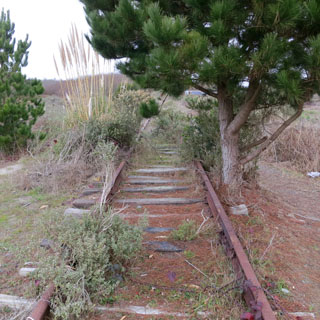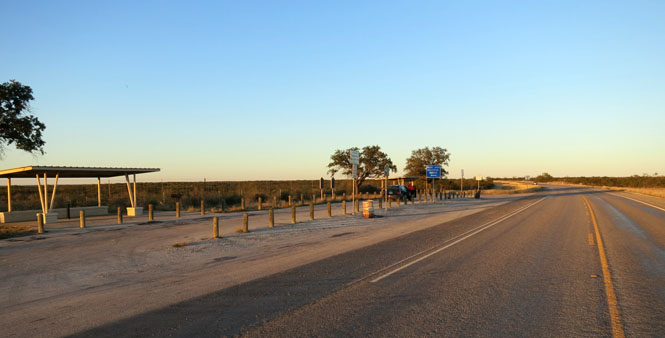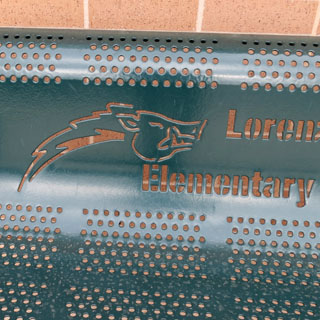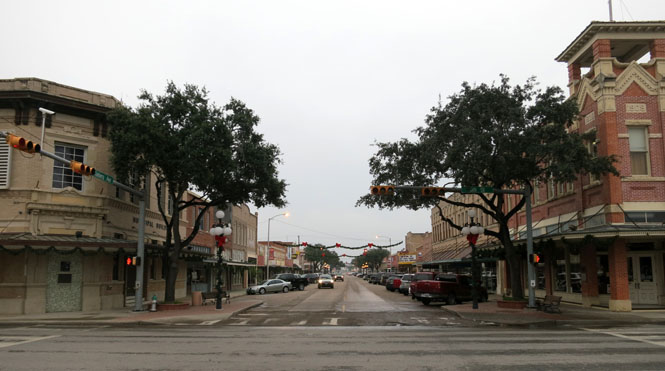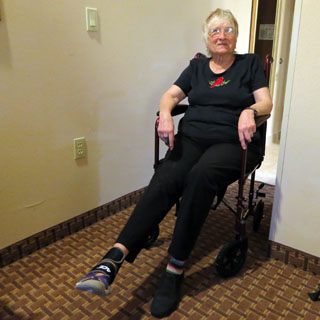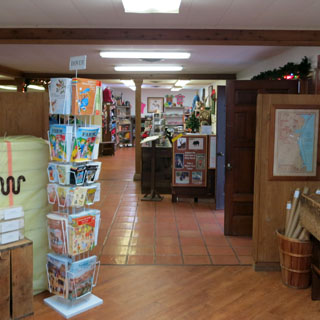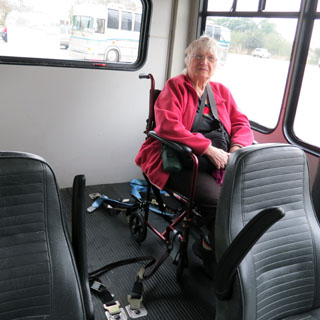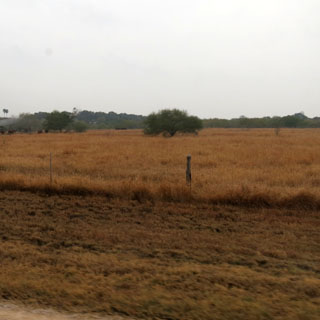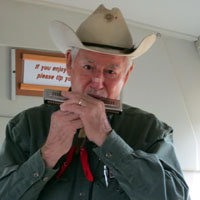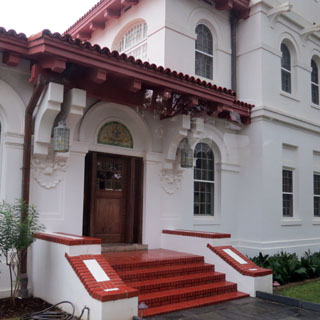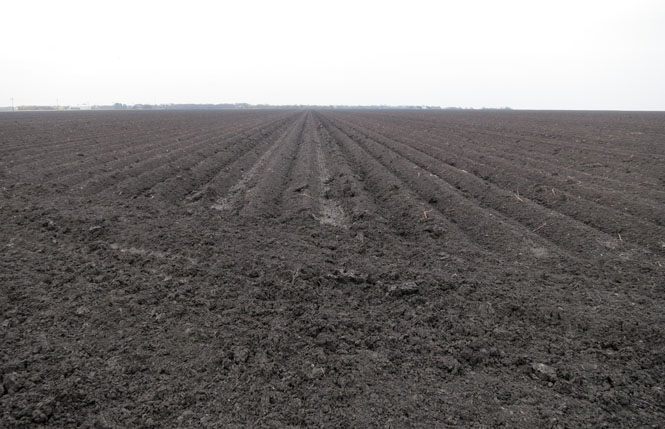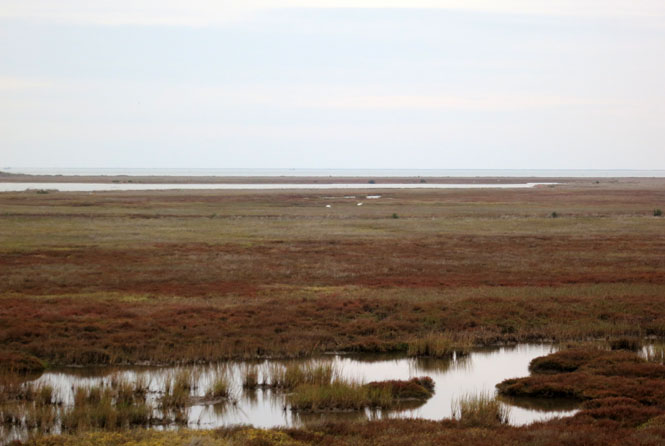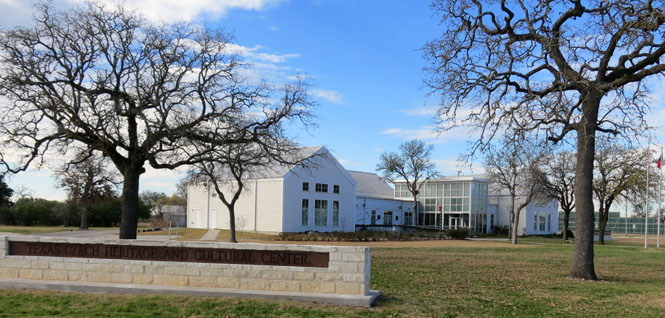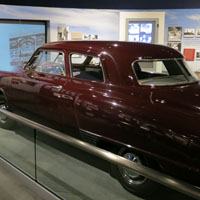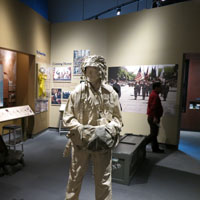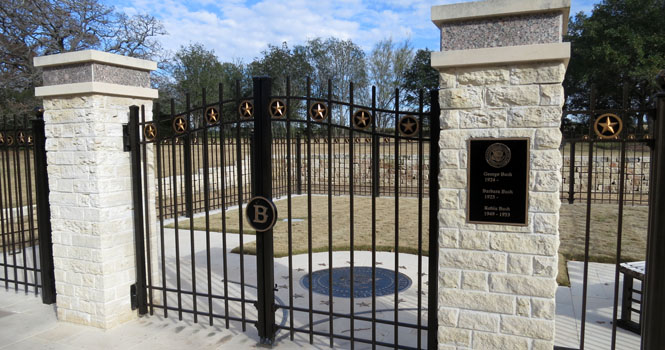December, 2013

The plan was to drive south into south Texas. We'd have time to explore the area around the King Ranch and the border region, see a couple of places along the Gulf Coast, and to then visit the art galleries in Houston before returning.
Unfortunately, because of a flight cancellation, a late start on the drive and a turned ankle, not all of that was possible. No matter; even with the loss of days, we did see quite a bit.
 California
California
The Elk River Hikshari Multi-Use Trail is quite new. Clearly, a great deal of clean-up work has taken place in order to create this paved trail that extends along Humboldt Bay, and then up the Elk River for about 1.5 miles total.
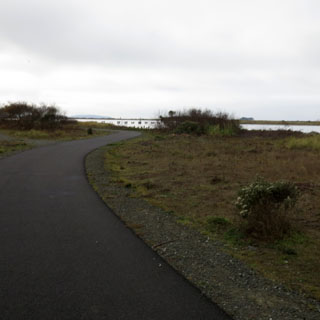
Years ago, both sides of the Elk River would have been part of the extensive logging industry. That's nearly all gone, but you'll still see remnants such as this decaying causeway and bridge.
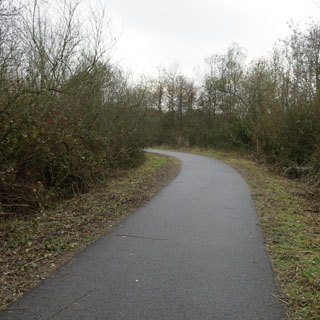
At once, these shorebirds rose from this mud island, circled around two or three times, and then all landed back in the same spot, facing the same direction.
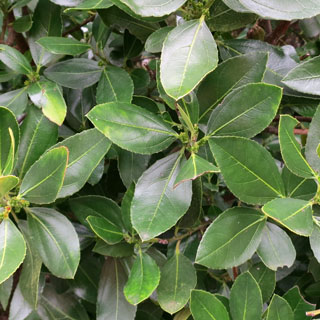

Flying from Eureka to Wichita, with the first stop at the Sacramento airport. Our departing flight was delayed (and then, delayed again) so that it would be impossible to make our connection in Denver. I was able to walk down to the nearly deserted United counter to sort out new flight reservations for the next afternoon in Denver, as well as the needed contacts for a hotel room in Denver.
It was easier to take care of all these details in Sacramento than trying to deal with it in Denver along with all the other passengers who had missed their flight. The only difficulty in the whole thing was that we were not well prepared for the bitter cold of Denver as we were waiting for the shuttle-bus to take us to the Marriott (where the bill was picked up by United). The next morning we would wait in the warmth of the hotel lobby.
 Colorado
Colorado
We ended up waiting in an enclosed, but unheated ramp-way as there was some mix-up on knowing if our airplane had arrived, or not (it had not). But, eventually it did, and after another hour on the ground waiting for deice, we were again on our way.
 Texas
Texas
Cisco, Texas
The Conrad Hilton chain of hotels began with this first hotel here in Cisco, Texas. It's a good place for lunch.
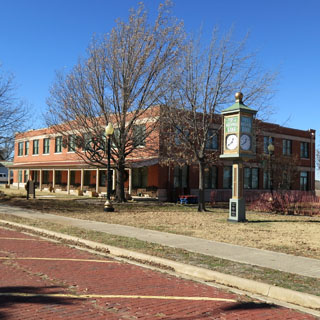
An elephant standing on the earth (in a nearby town).
A rest stop on a deserted Texas highway. It's quite cold, and quite windy.
Merry Christmas!
One of our tentatively planned destinations was Crystal City (home of the fighting Javalinas).
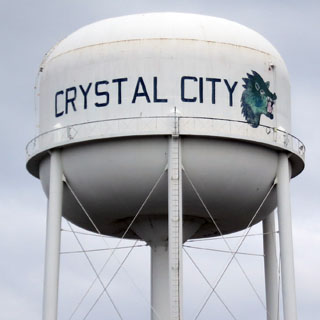
The War Relocation Authority was created by Executive order and established ten internment camps, including Manzanar and Tule Lake (to name just two of the better known camps). These camps were not part of the Department of Justice.
Separately, the Department of Justice (through the INS) also had camps under the authority of the Enemy Alien act of 1798. These were camps to house enemy aliens (across both North America and South America) and were under the restrictions of the Geneva Convention. While the Executive Order camps (to distinguish them) held American citizens of Japanese Ancestry, the INS camps held citizens of Germany and Italy as well as Japan.
The Crystal City Alien Enemy Detention Facility (also this link) was built to house entire families. Naturally, many of these family members were American citizens. The same racist attitudes that would define those other camps played a part in the INS camps--particularly for those citizens (now prisoners) who were forcibly removed from South American countries and sent to the detention facilities in the U.S.
The Crystal City camp operated from 1943 to February, 1948 and held upwards of 4,000 prisoners.

The Texas historical Commission has placed a number of these information boards around the site of the camp. There is very little visible except for occasional foundations and the remains of the camp swimming pool.
A granite memorial had been installed on the grounds well before these other information panels, but unfortunately the words reflect perhaps more bitterness and passion (however justified) than accuracy (the words better match the situation at Manzanar than this camp) No matter; between the dispassionate academic panels and the enraged granite marker, you do get some idea of the place and the thoughts of the people who were here.
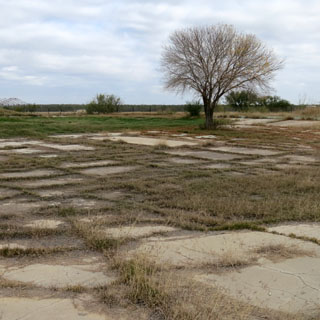
Kingsville, Texas. It shouldn't be this cold this close to Mexico.
The fact that this shallow curb is painted bright red suggests that other people have also twisted their ankle while walking on the sidewalk, but generally walking parallel to the drive. (I might suggest that the bench should be moved a little back, so as not to subtly move people towards that curb)
In any event, a rolling "transporter" was found at a nearby Walgreens, and it served us well. It compresses neatly together, and is easy to store in the car.
The King Ranch is one of the largest in the country (and used to be even larger).
The King Ranch Museum is in Kingsville. For unclear reasons, photography was not allowed inside the museum.
The King Ranch Visitor Center is on the grounds of the ranch, just a few miles outside of the town.

We saw no snakes on this trip (surely they would be too cold to move), but we did see a single Javalina on the drive between Crystal City and Kingsville. It didn't look fierce, and most certainly wasn't green (as on the Crystal City water tower).
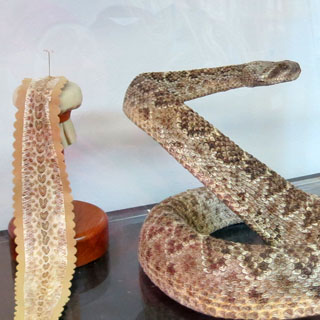
These folks are efficient! They snatched their rolling passenger out of the visitor center and had her loaded up before the rest of the passengers even knew we were loading for the tour of the ranch.
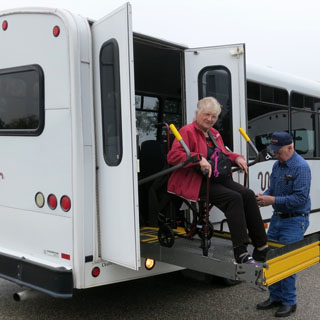
Of course, it's just a ranch (however large), so you're looking at pretty much what you can see out your car window. Even so; our guide did a really nice job explaining what we were seeing and some of the history and operations of the place.

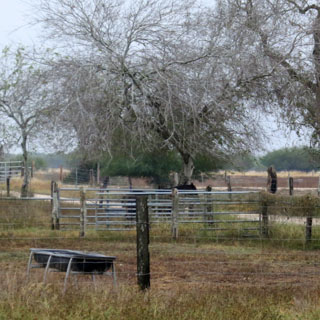
The Santa Gertrudis breed of cattle was created on the ranch.

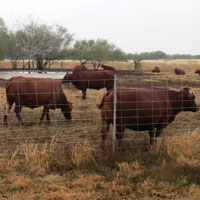
Halfway through the driving tour, this cowboy (LoLo is the name he goes by), who is fifth generation on the ranch, boarded our bus and told us his story. He's holding a picture of "Assault", the triple crown winner of 1946. LoLo was the first person to ride him. The King Ranch used to be quite active in breeding race horses. Breeding cutting horses is still important.

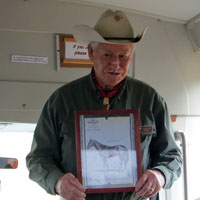
The old ranch house is quite impressive and would have been doubly so back when there really were no roads that would bring you here.

Driving along the coastline (although out of sight of it), the ground is dark and flat.
Aransas NWR was one of our destinations.
 Aransas
National Wildlife Refuge
Aransas
National Wildlife Refuge
In
1941, when only 15 whooping cranes survived in the wild, the iconic bird
became an emblem of alarm and concern for all endangered and threatened
species. Aransas became a focal point of the national and worldwide effort
to rescue the species from extinction.
Thankfully, due to the foresight of others, the Aransas National
Wildlife Refuge had been established in 1937 to serve as “a refuge and
breeding ground for migratory birds and other wildlife…” and “…for use as an
inviolate sanctuary, or for any other management purpose, for migratory
birds…”
-- NWR website
-- NWR website

We were not able to actually dip a toe in the gulf water, but we were very close.

Unfortunately, the boardwalk was closed, but there were a couple of elevated platforms that were very good for observing the coastline. We saw a number of birders (and birds).
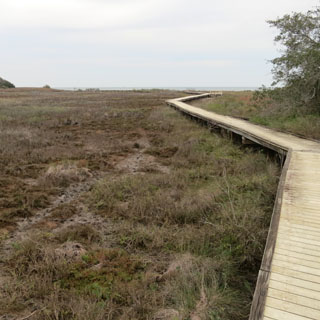
Those two white specks in the middle of the photograph? Those are Whooping Cranes.
The Texas Czech Heritage and Cultural Center isn't all that old, and it's quite an impressive collection of buildings. It was established to mark the history of the Czech people in settling this area of Texas.

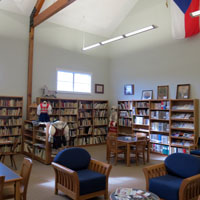
The George H. W. Bush Presidential Library and Museum is on the campus of Texas A & M University.
These horses are leaping over an actual piece of the Berlin Wall.
A large auditorium gave a quick history of Bush. It made a good introduction to the rest of the museum.

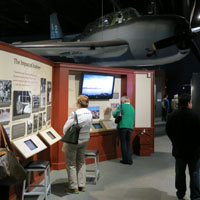
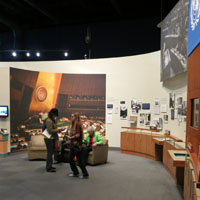
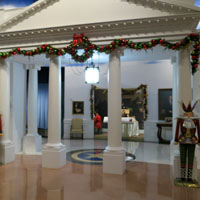
One daughter is already here. Eventually George and Barbara will be buried here.
In spite of the restraints of time (and ankle), we did manage to squeeze quite a few things into our time on the road. Good trip.


